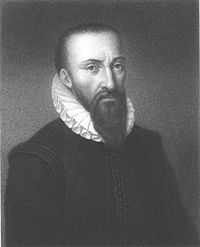This continues the story of medicine in the Civil War. Samuel Gross, a Professor of Surgery at Pennsylvania Hospital in 1860, realized that no textbook of military medicine and surgery existed so he wrote his own in 60 days. It is shown in this exhibit at the Warren Collection at Harvard’s medical library.
The Confederate Army also had no manual so the Gross manual was used by both sides in the war. It was quickly copied for Confederate Military surgeons. A copy of the manual, which was identical to the Union Army manual is preserved at Jefferson Medical College in digital form.
The first battle, famously, was at Fort Sumpter where the commanding office during the battle was actually the medical officer, Samuel Crawford.
The woeful state of the army medical department was recognized immediately and a volunteer organization quickly organized. The first was the US Sanitary Commission. It was rebuffed by the Army but quickly became very powerful. This was a people’s war and the Army was incompetent, as everyone knew.
Here is the cover of Gross’s book. It was used throughout the war, which had enormous influence on American and world Medicine. The book from which this lecture is taken was used by Theodore von Billroth to design the Prussian Army medical corps for the Franco-Prussian War in 1870. The French had forgotten Baron Larrey’s lessons and suffered terribly.
The cover of the Confederate version of Gross’s textbook.
Joseph Woodward was an academic surgeon, such as it was known at the time.
“Woodward was the first scientist to establish photomicrography as a tool for both scientific and medical investigations.” According to an article in the Archives of Pathology and Laboratory Medicine:[2] “In addition to collecting specimens for the museum’s archive, he co-authored the definitive medical history of the Civil War in the 6-volume 1870 publication of the MSHWR.4 Woodward’s technique using aniline dyes for staining thin sections of tissue, along with his pioneering work in photomicroscopy, helped prepare the groundwork for modern surgical pathology.”
The “History” is “The Medical and Surgery History of the War of the Rebellion” of which there are six existing full copies. I found one copy in the USC Medical Library and asked the library staff, who had no idea of its value, to place it in a locked collection room. It would be like finding a copy of “De Revolutionibus” on the shelves of an open university library.
The design of Union Army Hospitals was entrusted to Frederick Olmsted, who had designed New York City’s Central Park. He was, after the war, very involved in establishing The National Park Service.
The first battle of the war illustrated the appalling condition of the medical services of both sides. There were no ambulances and the wounded and to walk back to Washington City, as DC was known then.
A famous American surgeon, who would write one of the world’s great medical textbooks, William W Keen acted as a young army surgeon at the battle.
He studied at Brown University, where he graduated in 1859. He graduated in medicine from Jefferson Medical College in 1862. During the American Civil War, he worked for the U.S. Army as a surgeon. After the war, he spent two years studying in Paris and Berlin.
His “An American Textbook of Surgery” was a hugely influential text and the 1905 edition had a chapter on brain surgery by Harvey Cushing and a chapter on “Appendicitis,” the first use of the term in medical literature, written by John B Murphy, who was the first advocate of early appendectomy for appendicitis.
To be continued.




















